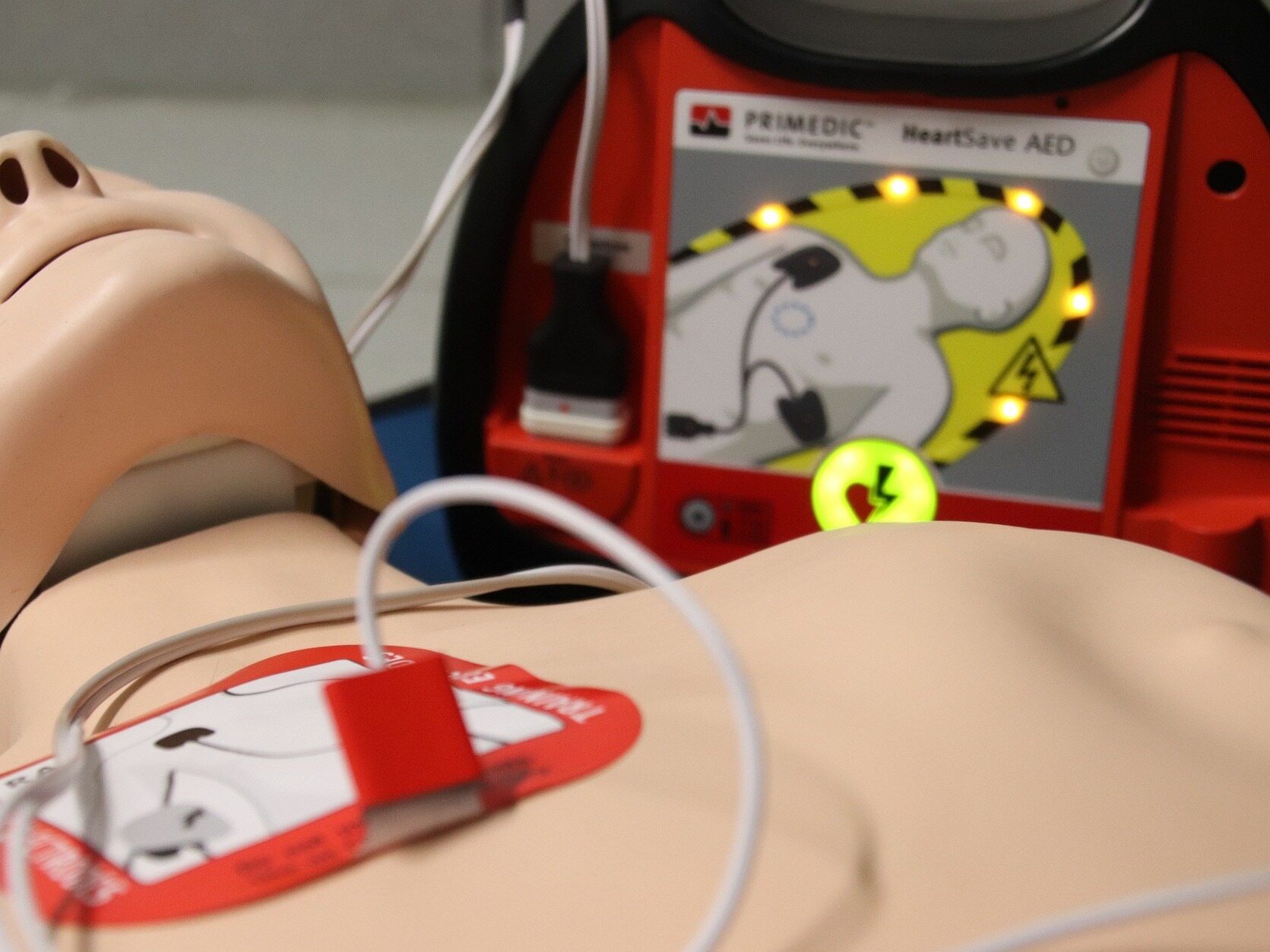AED use prohibited when wet? A famous rescuer about a “socially harmful piece of nonsense”

In connection with the accident that recently occurred at a swimming pool in Nowy Targ, a well-known paramedic explains whether the use of an AED (Automatic External Defibrillator) was really not possible due to the water.
Recently, information about an accident at the swimming pool in Nowy Targ circulated in the media. A man was drowning there, but according to TVN24, the rescuers did not notice it, and the alarm was raised by a 13-year-old girl. The man was resuscitated, taken to hospital, and is currently in a coma. The injured party was under water for two minutes, and the prosecutor's office is investigating the case.
The lifeguards at the swimming pool did not use a defibrillator to save the injured person
When saving the man, a defibrillator was not used – according to TVN24, it was not functional. The swimming pool management claims that even if it were there, it would not be useful. “The resuscitation was carried out right next to the water basin, on a wet person, by people who were wet, so it is so specific that this defibrillator would not have worked,” said Krzysztof Łapsa, director of the swimming pool in Nowy Targ, in an interview with “Fakty” TVN.
Paramedic Jan Świtała responded to this statement via social media: “I would like to kindly ask you not to repeat false information in public discussion,” he wrote on his Instagram. “Today's statement by Mr. Krzysztof Łaps, published in Fakty, in the material by Jarosław Kostkowski, is not only a lie (or shows extreme ignorance about Automatic External Defibrillators), but also an extremely socially harmful pack of nonsense,” added the paramedic.
Can you use an AED when it's wet?
Jan Świtała, a paramedic, denied the words of the swimming pool director that AED cannot be used when it is wet. “The fact that the injured person was wet, was in close proximity to the pool basin or in a 'puddle' of water IS NOT A CONTRAINDICATION TO DEFIBRILLATION USING AED.”
You can safely use an AED in the rain, in the snow, in a puddle, in a storm, in winter, in summer – it doesn't matter. The current passes between two electrodes, the people performing defibrillation move away from the injured person for the duration of the shock (on command) – explained the paramedic.
Was the use of a defibrillator really unnecessary?
In his entry published on Instagram, the paramedic also referred to the words said by Krzysztof Łaps in “Fakty” that the use of a defibrillator was not necessary in this specific situation. “It is also a lie that a defibrillator would not be needed – drowning may occur secondary to cardiac arrest caused by ventricular fibrillation or pulseless ventricular tachycardia occurring during sports activity such as swimming. In such a situation, the basic issue (apart from high-quality chest compressions and ventilation) is DEFIBRILLATION AS FAST AS POSSIBLE,” wrote the paramedic.
He also added that there should not be a situation in which there is no working defibrillator at a sports facility:
I consider allowing a sports facility to have an INFUNCTIONAL device as the personal, moral fault of the person responsible for safety at the facility. Moral, because no regulations oblige anyone to have an AED.






